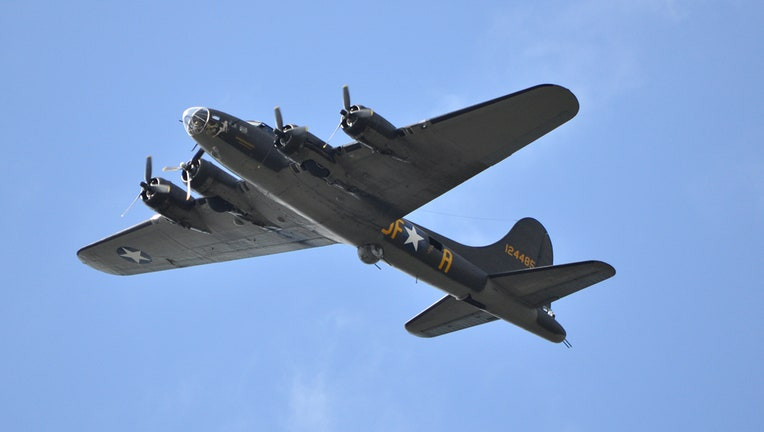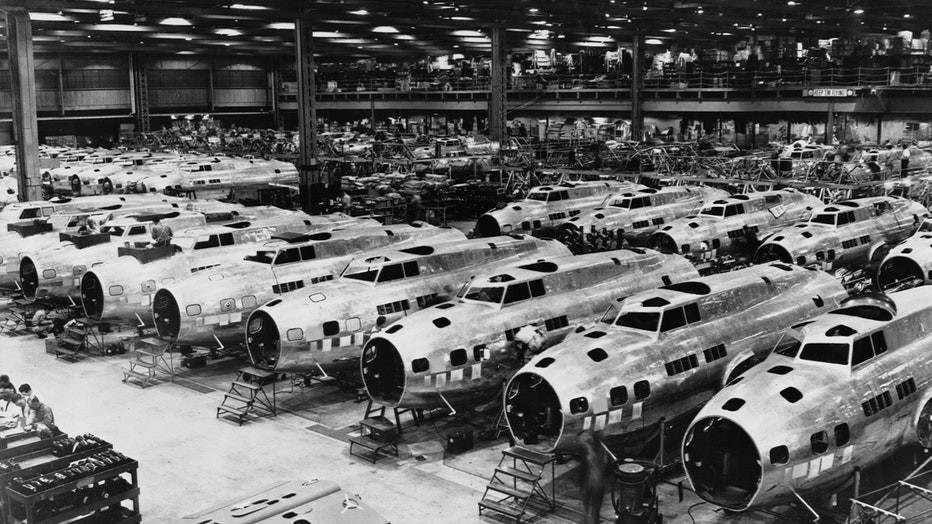The skies, once filled with the drone of countless aircraft during World War II, are now significantly quieter. The recent tragic crash at the Dallas airshow, involving a B-17 bomber, serves as a stark reminder of the dwindling number of these historic planes still gracing the skies. For aviation enthusiasts and history buffs alike, the question naturally arises: how many B-17 Flying Fortresses are still flying today? The answer, while sobering, underscores the immense historical value and the dedicated efforts to preserve these iconic aircraft.
A Stark Reminder: The Dallas Airshow Crash
The devastating mid-air collision at the Commemorative Air Force’s Wings Over Dallas WWII Airshow was a tragic event that claimed six lives and involved the loss of a B-17, the “Texas Raiders.” Witness accounts and footage captured the moment a P-63 Kingcobra collided with the B-17, resulting in the destruction of both aircraft. This incident, currently under investigation to determine the cause, has further reduced the already small number of airworthy B-17 bombers. The absence of flight data recorders on these vintage planes, due to their age, adds complexity to the investigation. Ironically, it is precisely this age and history that makes these aircraft so captivating.
 The restored movie version of the Memphis Belle flies over an airport in Tampa, Fla. (FOX photo)
The restored movie version of the Memphis Belle flies over an airport in Tampa, Fla. (FOX photo)
The Legacy of the B-17 Flying Fortress
The Boeing B-17 “Flying Fortress” was a cornerstone of the United States’ air power during World War II. As a heavy bomber, it was instrumental in strategic bombing campaigns over Europe and also saw action in the Pacific theater. Typically manned by a crew of ten, these four-engine behemoths were equipped with multiple gun turrets, manned by dedicated gunners tasked with defending against enemy fighters while on bombing runs.
A Workhorse of WWII
The B-17 became renowned for its crucial role in the Allied victory. It dropped more bombs than any other American aircraft during WWII, playing a pivotal part in weakening the Axis powers. Primarily deployed in Europe, the B-17’s impact on the war effort was undeniable.
Durability and Fame
Beyond its bomb-carrying capacity, the B-17 earned a reputation for its remarkable resilience. Stories abound of B-17s returning to base despite sustaining extensive damage, a testament to their robust construction and the skill of their crews. Perhaps the most famous B-17 is the “Memphis Belle,” immortalized in a 1990 film. The original “Memphis Belle” is currently undergoing restoration at the U.S. Air Force Museum, but another B-17, painted to resemble the iconic aircraft, continues to tour airshows, keeping the legend alive.
The Numbers: Surviving and Airworthy B-17s
Between 1937 and 1945, a staggering 12,731 B-17s were manufactured. However, the attrition of war and time has significantly reduced their numbers. Approximately 4,735 B-17s were lost during World War II. While many continued to serve in military and civilian roles post-war, the vast majority were eventually retired, scrapped, or destroyed.
Today, approximately 45 B-17s exist in complete form around the world. Of these, a mere nine are airworthy, capable of flight. These operational B-17s are precious relics of aviation history. The remaining non-flying B-17s are primarily housed in museums across the globe, with a significant concentration in the United States, but also examples in the UK, France, and Brazil. Interestingly, many of these surviving B-17s were built too late to see combat in WWII.
 Rows of B-17 Flying Fortress heavy bombers are under production at a Boeing plant in Seattle, Washington. 1942-1945. (Photo by Library of Congress/Corbis/VCG via Getty Images)
Rows of B-17 Flying Fortress heavy bombers are under production at a Boeing plant in Seattle, Washington. 1942-1945. (Photo by Library of Congress/Corbis/VCG via Getty Images)
Keeping History Alive
With so few B-17s still airworthy, opportunities to witness these magnificent aircraft in flight are rare, primarily limited to airshows. Typically, only five or six of the airworthy B-17s are actively touring at any given time. Organizations like the Commemorative Air Force play a vital role in maintaining and operating these planes, using them as “flying classrooms” to educate future generations about WWII history. They often offer rides, particularly to WWII veterans, ensuring that the stories and sacrifices of that era are not forgotten.
The costs associated with operating and maintaining these aging aircraft are substantial. To offset these expenses, organizations sometimes offer rides to the public, providing a unique and unforgettable experience for aviation enthusiasts. Seats, especially the coveted bombardier’s seat in the nose of the plane, can command significant prices, reflecting the rarity and historical significance of flying in a B-17.
The opportunity to see a B-17 Flying Fortress in flight is a chance to connect with history in a tangible way. As WWII veteran Foster Heath eloquently stated after a flight in the B-17 “Aluminum Overcast,” it’s crucial for younger generations to understand the sacrifices made during the war and to learn from the past. The sight and sound of a B-17 in the sky is a powerful reminder of a pivotal moment in history and the enduring legacy of these incredible machines and the brave crews who flew them.
